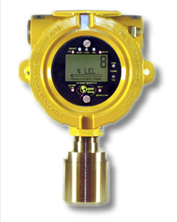Within many industrial settings, flammable liquids and gases can create a work atmosphere that needs constant monitoring to maintain the highest possible safety levels. To accomplish this, facilities install an LEL detector that is capable of monitoring the mixing of flammable gases with oxygen, resulting in a fixed ratio that can be used to determine if appropriate safety levels are being maintained. However, to properly understand these safety levels, it’s important to understand the two types of explosive limits, UEL and LEL.
LEL and UEL
When checking for dangerous gas levels, it’s always best if the readings from the LEL monitor are near the lower explosive limits, or LEL. Known as the lowest percentage of gas that can support a flame without igniting, it’s considered the range in which workers can be safe within their work environment. However, an upper explosive limit, or UEL, refers to the highest percentage of gas that can burn in the air without resulting in an explosion. Because of this, an LEL gas detector can play an important role in numerous aspects of LEL and UEL gas detection.
Minimizing Accidents
Whether it’s at an oil refinery, water treatment plant, automotive manufacturer, or other facility, LEL sensors play a vital role in minimizing accidents. This is especially helpful when it comes to gas leakage, which will be indicated when the combustible LEL sensor indicates higher values are present. Since explosions can occur if the ratio lies within the LEL and UEL margin, safety personnel can constantly monitor the area for potential danger and initiate appropriate actions if needed.
Gas Intake
Since many explosions occur when the ratio of gases within engines are outside the LEL and UEL margins, these detectors are widely used within the automotive industry during the engine production process. As engineers attempt to set the engine’s combustion level to facilitate the correct amount of fuel needed to start the engine, detectors such as these are carefully monitored to ensure workers stay safe during the production process. To be as effective as possible with this process, production engineers use sweep gases such as argon to test the atmosphere. If no reaction occurs during this test and gas levels stay within appropriate safety guidelines, it shows the work atmosphere is safe and cannot support combustion.
Concentration Spectrum
To ensure the LEL and UEL levels are easy to understand, most detectors come equipped with screens that display graphs in real-time. Showing the current concentration spectrum ranging from zero to 100 percent, the data is monitored at a central location 24/7. In most facilities using these sensors, the entire system of monitors, sensors, alarm panels, and central location software can be set up in a matter of hours, helping to keep virtually any facility safe from explosions.
By having an understanding of LEL and UEL limits, oil and gas facilities as well as those in other industries can remain safe. To learn more about this topic, contact GDS Corporation and speak with an applications engineer today.

